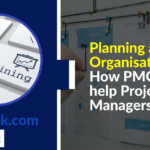Opting for a directive project management office (PMO) can bring great benefits to a business. When considering the style of PMO to adopt for your company, you should be asking; is a directive PMO right for your organisation?
A directive PMO is a little different to other office styles in that all of the project managers report into the office and are assigned to projects as they come up. This means there is a high degree of control over projects. To help you get to grips with this type of PMO, we’re going to explore:
- The activities a directive PMO undertakes
- How a directive PMO can benefit a company
- What type of organisations could benefit from a directive PMO
What does a directive PMO do?
A directive PMO has a pool of highly trained and effective project managers, ready to be assigned to projects as they are commissioned. Rather than taking an overview of projects that can come from different business areas, this type of office directly runs projects.
By staffing projects directly, the office can exert full control over aspects of projects. This should lead to consistently successful projects being delivered in the long term.
With this PMO type, the office is responsible for defining:
- Project methodology, such as whether to use Agile, Kanban, Waterfall, etc.
- Standards for projects to adhere to, such as setting the KPIs for projects and teams
- Policies that will be used such as resource allocation, purchasing, continuity, and so on
As with other types of PMO, a directive office will produce a range of reports. The data gathered should be used to improve project delivery and direct training and other resourcing needs.
Why should I use a directive PMO?
A directive PMO will bring order and structure to your projects. Some of the key benefits of a directive PMO include:
- Having a common methodology across projects, meaning your team can be assigned to any project and be successful
- Using standard terminology keeps projects well organised and stops confusion in a large organisation. It can also help when communicating with stakeholders
- When a process is effective, it’s easily repeatable because the office is in charge of all the people who run projects – there’s no conflict across departments
- Harmonised support tools means that resources can be allocated efficiently and you only need to train your project teams on one set of technology or hardware
Full responsibility for projects lands with the directive PMO. Having this level of accountability can drive positive results and let the C-suite know where to look when assessing success or failure of projects.
What are the use cases for a directive PMO?
Running a directive PMO is useful in large organisations. Having a central location to find good project managers who can jump into any project cuts down the time from a project being commissioned to when it gets started.
In a business that is highly projectised, i.e. where the main business is getting projects delivered to clients, having a strong PMO that directs activity is effective. Your projects should run smoothly when all managers share a skillset and work to the same process.
Similarly, when your projects are delivered externally there is likely going to be a lot of communication with external stakeholders. Having harmony of process and language is professional and easy for everyone to work with.
The take home
A directive PMO falls into the category of being a managerial or proactive PMO. The office will produce reports and have frameworks and templates, but that activity is to directly support the project managers that report into it.
You can expect high standards of project management when everything runs through this type of PMO. Conversely, a lot of power sits within a directive PMO with many functions under one office. C-suite monitoring should be high because a lot goes through the office.
When considering whether a directive PMO is right for your organisation, be sure to understand who the main stakeholders are for your projects and whether you have the talent pool to have project managers sitting within the office.




